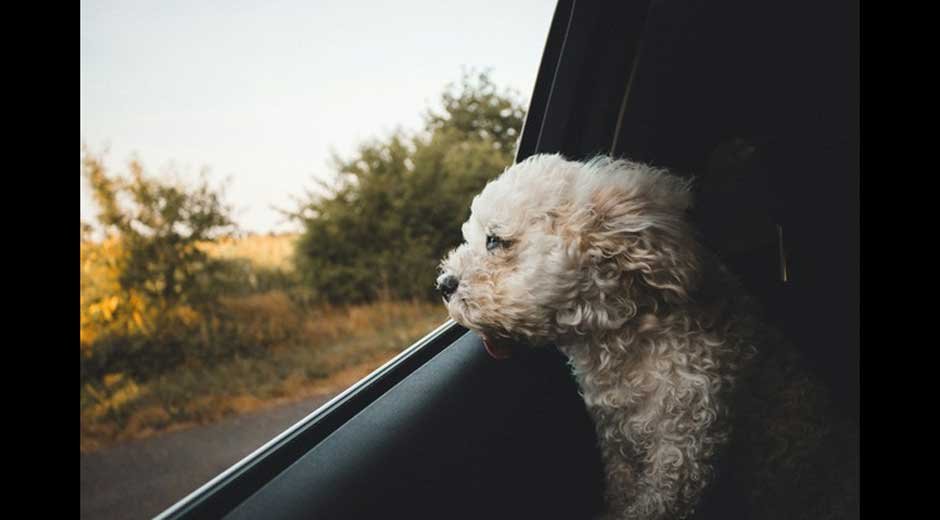Traveling With Pets: Safety Tips and Must-Have Essentials

Traveling with a pet can be one of life’s most joyful experiences. Whether it is a road trip to the mountains, a flight across the country, or a weekend getaway, bringing your companion along makes every journey richer. But traveling with pets also requires planning and preparation. Their safety, comfort, and well-being depend on how well you anticipate their needs.
Why Preparation Matters for Pet Travel
Pets thrive on routine, and travel disrupts that routine. New environments, noises, and smells can be overwhelming. Without preparation, pets may become anxious, sick, or even endangered during the journey. Travel also introduces new risks such as exposure to parasites, accidents, or health emergencies. By planning carefully, pet parents can transform a stressful trip into a safe and enjoyable adventure.
Understanding the Challenges of Pet Travel
Not all pets love to travel. Some experience motion sickness, while others suffer from separation anxiety when placed in carriers. Airline policies differ widely, and driving long distances with pets requires more breaks than most owners expect. These challenges do not mean you should leave your pet behind, but they do mean you need to be intentional in how you travel together.
The Role of Pet Insurance in Travel Preparation
Even with the best preparation, emergencies can happen on the road or in the air. An unexpected illness, an injury from rough play at a rest stop, or sudden dietary distress in a new environment can all require veterinary care. Pet insurance can reduce the financial burden of these emergencies. Some plans even include wellness add-ons or travel coverage. Comparing options in this ranking of the best pet insurance plans helps ensure you choose protection that fits your lifestyle.
Road Trips With Pets
Safety in the Car
Pets should never travel loose inside a vehicle. In an accident, an unrestrained pet becomes a projectile, risking injury to themselves and other passengers. Use a crash-tested carrier, travel crate, or harness seat belt to keep your pet secure. The Center for Pet Safety has conducted crash tests on various travel products, showing that many standard carriers are not protective enough in accidents.
Comfort Along the Way
Long drives require frequent stops. Plan breaks every two to three hours for bathroom breaks, short walks, and water. Never leave your pet unattended in a car, even for a few minutes, as temperatures can rise quickly and lead to heatstroke.
Motion Sickness Solutions
Some pets struggle with nausea in the car. Feeding a light meal a few hours before departure, providing fresh air through cracked windows, and offering comfort toys can help. In severe cases, your veterinarian may recommend anti-nausea medication.
Air Travel With Pets
Research Airline Policies Early
Every airline has its own rules about pet travel. Some allow small pets in the cabin, while others require cargo transport. Breed restrictions, weight limits, and health certificate requirements all vary. Check policies before booking, and schedule a vet visit to secure any necessary paperwork.
Choose the Right Carrier
For in-cabin travel, airlines usually require soft-sided carriers that fit under the seat. The carrier should be well-ventilated, comfortable, and large enough for your pet to stand and turn around. Introduce the carrier at home weeks before the trip so your pet associates it with safety, not stress.
Cargo Travel Considerations
When pets must travel in cargo, choose direct flights to minimize layovers and handling. Avoid extreme temperatures by flying early in the morning during summer or mid-day in winter. Clearly label the carrier with your contact details, and include a photo of your pet in case of separation.
Health and Safety Essentials
Veterinary Preparation
Schedule a pre-travel veterinary checkup. Confirm vaccinations are up to date and ask about preventive medications for parasites, especially if traveling to areas with high flea, tick, or heartworm risks. Bring copies of vaccination records, as some hotels, airlines, or border crossings may request proof.
First Aid Kit for Pets
Pack a travel-specific first aid kit. Essentials include bandages, antiseptic wipes, tweezers for tick removal, a digital thermometer, and any prescribed medications. Your vet can suggest additional items based on your pet’s health history.
Identification and Microchipping
Even the most cautious owner cannot eliminate all risk of a pet slipping out of a carrier or collar. A secure ID tag with current contact information is essential. Microchipping provides a permanent form of identification and increases the chance of reunion if your pet gets lost while traveling.
Packing Must-Have Essentials
Pets need their own luggage. Include food, bowls, bottled water, waste bags, litter or portable litter boxes for cats, bedding, toys, and grooming supplies. Familiar items, such as a favorite blanket or toy, reduce stress in unfamiliar environments.
Comfort and Anxiety Management
Familiar Routines on the Road
Try to maintain feeding and walking schedules close to your pet’s usual routine. Consistency provides reassurance and reduces anxiety.
Calming Aids
For anxious travelers, calming sprays, pheromone diffusers, or veterinarian-approved supplements can help. Some pets benefit from thunder shirts or pressure wraps, which create a soothing effect through gentle compression.
Exercise Before Travel
A tired pet is a relaxed traveler. Schedule extra playtime or a long walk before departure to help burn off nervous energy.
Staying Safe at Your Destination
Pet-Friendly Lodging
Research hotels or rentals that welcome pets. Many accommodations provide special amenities such as designated relief areas or welcome kits. Always check house rules to avoid surprises at check-in.
Exploring Safely
Leash laws vary by location, so always confirm regulations before heading out. In new environments, even well-trained pets may wander, so supervision is key.
Local Veterinary Resources
Before leaving, research veterinary clinics near your destination. Having a list on hand ensures you can act quickly if your pet needs medical attention.
International Travel With Pets
Traveling abroad requires additional preparation. Many countries have strict import rules, including quarantine periods, vaccination records, or health certificates. Start researching months in advance to avoid complications. Failure to follow regulations may result in your pet being denied entry.
Balancing Adventure and Responsibility
Traveling with pets is about balancing adventure with responsibility. The joy of hiking trails with your dog or watching your cat explore a new space is immense, but so is the responsibility of keeping them safe. With preparation, awareness, and the right tools, your pet can enjoy the journey as much as you do.
Final Thoughts
Pets are more than companions, they are family members who deserve the same level of care and safety we give ourselves while traveling. From car rides to cross-country flights, preparation ensures comfort and protection at every step. Packing essentials, securing proper identification, and staying on top of veterinary needs allow you to focus on the joy of the journey.
Pet insurance adds an extra layer of reassurance by covering emergencies that might arise on the road or in the air. Planning ahead, from gear to coverage, means you are ready for both the expected and the unexpected. With thoughtful preparation, every trip becomes a memory worth treasuring, shared with the furry friend who makes the journey truly complete.



